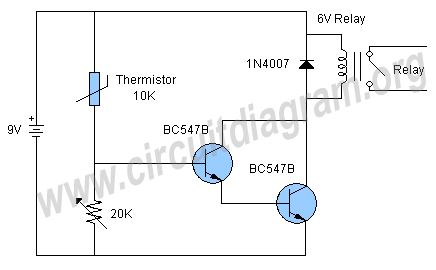
Toggle Switch No.1 - Cmos 4013

This circuit energizes and de-energizes a relay with the push of a button. Any momentary push-to-make switch can be utilized. Pressing the button once energizes the relay, while pressing it a second time de-energizes the relay. The circuit is illustrated using a single-pole relay, although a multi-pole relay can be employed if needed for specific applications. Only one half of the CMOS 4013 IC is used, allowing for the construction of two independent toggle switches with a single integrated circuit. The circuit operates within a voltage range of 5 to 15 volts, necessitating the selection of a relay with a coil voltage compatible with the power supply. An LED provides a visual indication of the relay's energized state, serving as an indicator of whether the switch is on or off. The LED and its associated resistor (R3) are not essential for circuit operation and can be omitted if desired. Caution is advised against using the on-board relay for switching mains voltage due to insufficient isolation between the relay contacts and low-voltage components. For mains voltage applications, a suitably rated relay should be mounted in a safe location away from the board.
This circuit functions as a simple toggle switch, utilizing a momentary action push-to-make switch to control the state of a relay. The relay serves as an electromechanical switch, enabling the control of higher voltage or current loads while maintaining low-voltage control circuitry. The inclusion of the CMOS 4013, a dual D-type flip-flop, allows for the toggle functionality, where one half of the IC is configured to change state with each button press.
The circuit design requires careful selection of the relay based on the voltage and current specifications of the load to be controlled. The relay's coil must match the supply voltage, which can vary from 5 to 15 volts, providing flexibility for different applications. The visual indication provided by the LED enhances usability by allowing the user to easily determine the relay's status.
In terms of safety, the warning against using the on-board relay for mains voltage switching is crucial. The proximity of low-voltage components to relay contacts poses a risk of electrical shock or damage. For applications involving mains voltage, it is recommended to utilize a relay that is rated for such use and to install it in a manner that ensures adequate isolation from the control circuitry. This could involve using a separate enclosure or mounting the relay on a different board entirely.
Overall, this circuit is ideal for applications requiring a simple toggle switch mechanism, offering versatility and ease of use while emphasizing the importance of safety in higher voltage applications.This simple circuit will energize and de-energize a relay at the push of a button. Any type of momentary action push-to-make switch can be used. Pushing the button once - will energize the relay. And pushing it a second time - will de-energize the relay. I`ve drawn the circuit with a single pole relay. But you can use a multi-pole relay if it suit s your application. Only one half of the Cmos 4013 is used. So you could construct two independent toggle switches with a single IC. The circuit will work at anything from 5 to 15-volts. All you need do is select a relay with a coil voltage that suits your supply. The LED provides a visual indication that the relay is energized. In effect - it tells you whether the switch is on or off. It`s not necessary to the operation of the circuit. If you wish you may leave out R3 and the LED. Do not use the "on-board" relay to switch mains voltage. The board`s layout does not offer sufficient isolation between the relay contacts and the low-voltage components. If you want to switch mains voltage - mount a suitably rated relay somewhere safe - Away From The Board.
🔗 External reference
This circuit functions as a simple toggle switch, utilizing a momentary action push-to-make switch to control the state of a relay. The relay serves as an electromechanical switch, enabling the control of higher voltage or current loads while maintaining low-voltage control circuitry. The inclusion of the CMOS 4013, a dual D-type flip-flop, allows for the toggle functionality, where one half of the IC is configured to change state with each button press.
The circuit design requires careful selection of the relay based on the voltage and current specifications of the load to be controlled. The relay's coil must match the supply voltage, which can vary from 5 to 15 volts, providing flexibility for different applications. The visual indication provided by the LED enhances usability by allowing the user to easily determine the relay's status.
In terms of safety, the warning against using the on-board relay for mains voltage switching is crucial. The proximity of low-voltage components to relay contacts poses a risk of electrical shock or damage. For applications involving mains voltage, it is recommended to utilize a relay that is rated for such use and to install it in a manner that ensures adequate isolation from the control circuitry. This could involve using a separate enclosure or mounting the relay on a different board entirely.
Overall, this circuit is ideal for applications requiring a simple toggle switch mechanism, offering versatility and ease of use while emphasizing the importance of safety in higher voltage applications.This simple circuit will energize and de-energize a relay at the push of a button. Any type of momentary action push-to-make switch can be used. Pushing the button once - will energize the relay. And pushing it a second time - will de-energize the relay. I`ve drawn the circuit with a single pole relay. But you can use a multi-pole relay if it suit s your application. Only one half of the Cmos 4013 is used. So you could construct two independent toggle switches with a single IC. The circuit will work at anything from 5 to 15-volts. All you need do is select a relay with a coil voltage that suits your supply. The LED provides a visual indication that the relay is energized. In effect - it tells you whether the switch is on or off. It`s not necessary to the operation of the circuit. If you wish you may leave out R3 and the LED. Do not use the "on-board" relay to switch mains voltage. The board`s layout does not offer sufficient isolation between the relay contacts and the low-voltage components. If you want to switch mains voltage - mount a suitably rated relay somewhere safe - Away From The Board.
🔗 External reference





